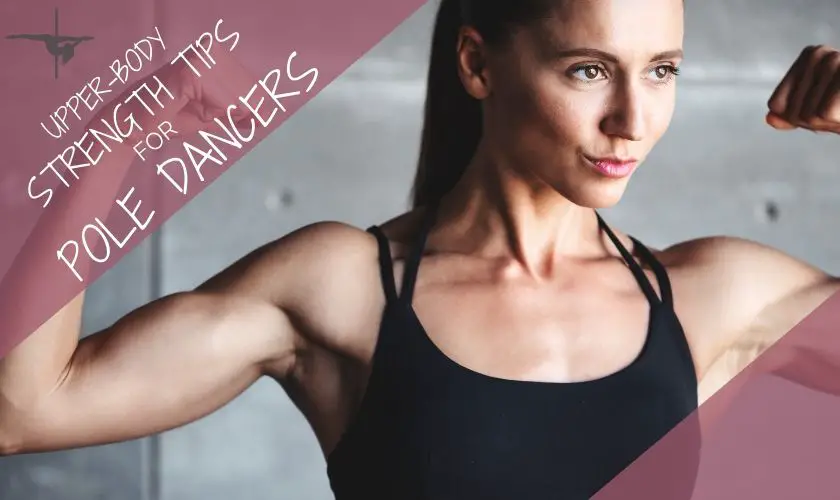As a pole dance instructor, part of your role is to give feedback to your students who are paying you to teach them.
Giving feedback is a challenging part of being a teacher – the way you structure or phrase your feedback can have a major impact on your student.
Encouraging words used at the wrong time can encourage bad form, or even injuries in the long run.
Critical words can be too discouraging and set someone back, or even make them feel embarrassed to attend your class again.
So, what’s the best way to give feedback?
Let’s discuss.
What Are Your Student’s Goals?
Your student’s goals will shape how you give feedback.
Not every pole dancer in your class wants to become a professional competition winner.
Many students are simply there to stay in shape, just like they would be for any other fitness class.
If they’re just there to stay in shape, what does it matter if their lines and landings aren’t perfect?
They’re working their muscles and getting a full-body workout, they’re not trying to win any prizes in a competition.
However, certain aspects of becoming a better pole dancer, such as pointing your toes, landing gracefully and performing an aerial invert – these are actually important parts of building strength, flexibility and control.
A student may not be aiming to win any gold medals (when pole dancing finally becomes an Olympic sport) but the graceful aspects of strength and control are the reason why people choose pole dancing classes over some other sport.
Get Students to Set Their Own Goals
Don’t tell your students what their goals should be – get them to set their own.
E.g. don’t pass your own judgement: “I think Kelly needs to work on her handspring because she’s not progressing with it” – maybe Kelly doesn’t want to get that trick perfect, maybe she has other goals in mind.
A single trick should never block a student from progressing further.
You could do goal-setting with your students regularly, such as at the start of each class.
Get all your students to identify one of their pole goals.
This could be:
- Completing a successful invert
- Nailing a nemesis move (Janeiro is my nemesis move!)
- Move closer towards doing the splits
Or it may be a wider fitness goal, unrelated to pole dancing:
- Weight loss goals
- Dress size goals
- Strength goals (e.g. the ability to lift 100lbs, the ability to do a pull-up, etc)
Regularly Re-Visit Those Goals
This is the crucial part – there is no point setting goals if you’re not going to monitor them or do specific tasks to work towards them!
With your students, monitor their progress towards each goal every week or two to keep them on track.
For example, if someone’s goal is to complete a successful invert – make sure their focus is on that by setting them invert conditioning tasks – that way you an provided a tailored and bespoke learning experience.
When it comes to monitoring goals, you can make suggestions to your students about which areas they need to work on if they want to smash their targets they set for themselves.
Want more Pole Tricks?
Get your copy of the Pole Tricks Handbook – includes an entire syllabus of pole dancing tricks to teach in classes!
When A Student Needs Feedback
Here are some tips for a pole dance instructor when giving feedback to their students in a pole class:
- Be specific: When giving feedback, it’s important to be specific about what the student is doing well and what they can improve on. For example, instead of saying “good job,” say “I really liked that creative entry into that move,” or “next time, try to engage your core muscles earlier to help with your inverts.“
- Use positive language: Focus on what the student is doing well and give constructive feedback on how they can improve. Avoid using negative language or criticism.
- Demonstrate: If you are able to demonstrate the technique or move that you are giving feedback on, it can help the student understand and visualize what you are trying to teach.
- Encourage: Encourage and motivate your students to continue practicing and improving. A positive and supportive environment can help students feel more confident and motivated to try new things.
- Be patient: Pole dancing is an extremely challenging and physically demanding activity, and it may take time for students to learn and master new these new techniques. Be patient and understanding of the progress that each student is making, and encourage them to keep practicing.
- Offer individualized feedback: Every student learns at a different pace and may have different strengths and challenges. Try to tailor your feedback to each student’s individual needs and goals.
See also: Can men attend pole dancing classes?

Final Thoughts
As a pole dancing instructor, the way you approach feedback can help you build a stronger rapport with your students, giving them a more fulfilling workout experience at the same time.
Remember, the key to giving effective feedback is to be specific, use positive language, demonstrate, encourage, be patient, and offer individualized feedback.
With these strategies in mind, you can help your students feel motivated, supported, and confident in their pole dance journey.
Happy poling!






